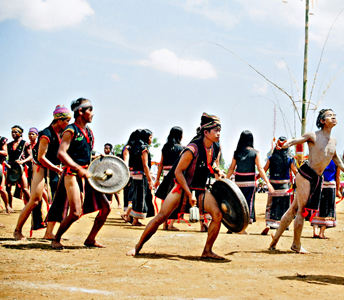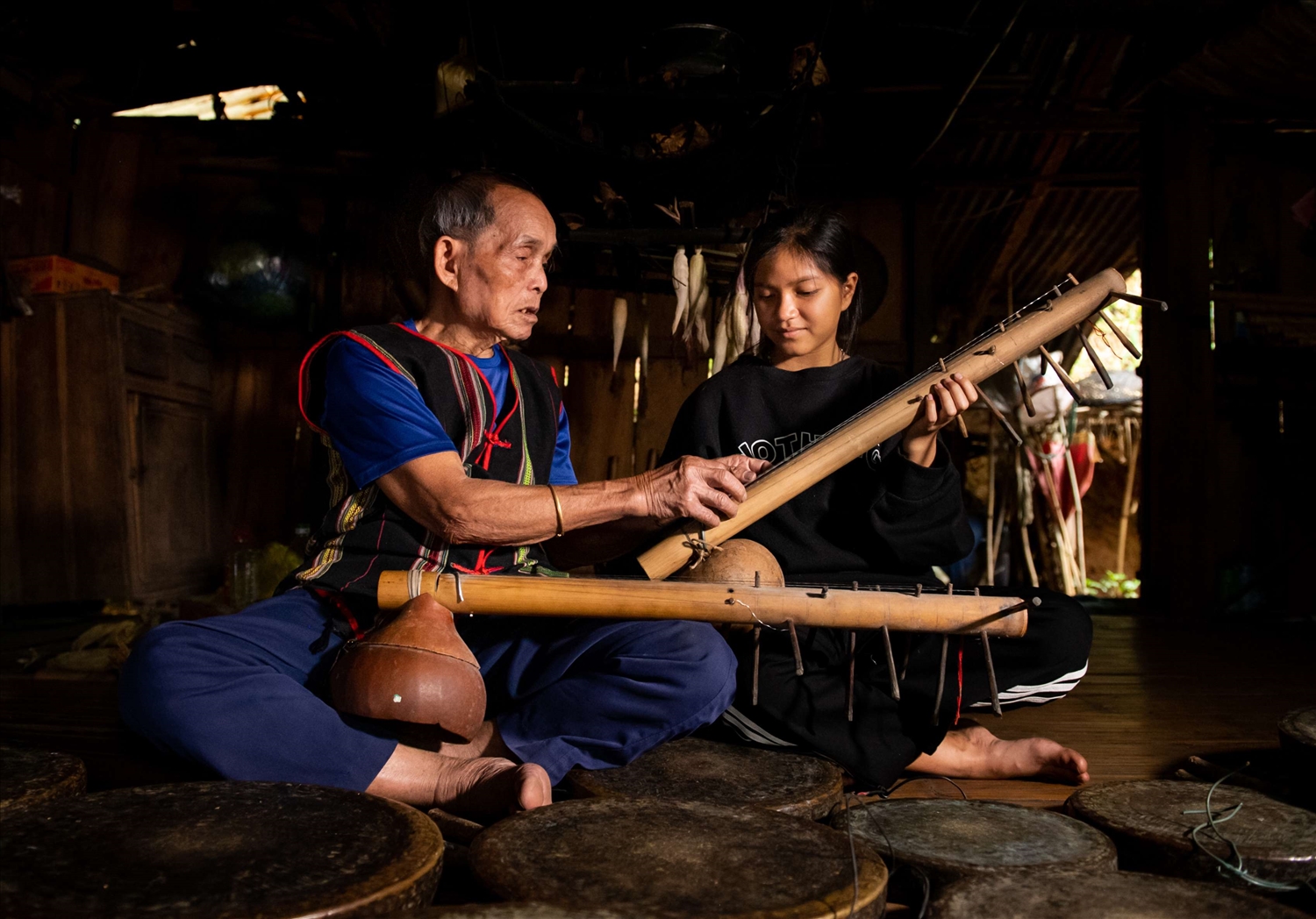Tapping instruments form an integral part of the Vietnamese traditional musicology in general and the imperial court music in particular, helping to establish a particularity and identity to the Vietnamese culture.
Tapping instruments are found in exceptional abundance across Vietnam, in terms of quantity, category and sonority, creating a diversity in function and occupying a major position in virtually all the genres of traditional arts. Hundreds of tapping instruments have made contributions to the enrichment of the patrimony of Vietnamese traditional music.
From the Ly Dynasty (the 10th century), the Tran Dynasty (the 13th century), the Le Dynasty (the 14th century) to the Nguyen Dynasty (the 19th century), Vietnamese musicology generally and court-music particularly made giant strides in the formation of the genre of professional, academic musical culture.

In 1060, King Ly Thanh Tong permitted the adoption of the Champa music, re-arranging Champa musical compositions for court singers’ and dancers’ training and performance. Then the “trong com” (or Phan co) and the “nao bat” represented the tapping pieces among the musical instruments of the court orchestras.
During the Tran Dynasty (the 13th-14th centuries), both the court music bands and orchestras already used three tapping pieces of different sonority: the “chum choe” or “bo tieu bat” – the cymbals, made of brass, the “trong com” or “Phan co” — cylinder-shape drums, swelling in the middle, with its two ends covered with leather and rice paste on, giving two different sounds, low and high, and the “trong cai” or “dai cau” — the bass drum, giving a deep-toned rumbling or booming sound upon percussion.
In the court music under the Le Dynasty (the Year of Quang Hung 1578), the “dong van” set of tappings included the “nguong thien” drum — the one with a thin drumhead stretched over only one end and painted yellow, the “long sinh”, the “long phach”, and the “phach xau tien” (castanets).

The military band (of the cavalry and the “ba lenh”) under King Le – Lord Trinh used 10 snares to accompany a bass drum (the “Dai co”), and the wind instruments for the cavalry corps. The “ba lenh” utilized more wooden or bamboo tappings and a variety of drums, especially the “phong yeu” — a cylinder-drum constricted in the middle, producing “tam” (low-pitched bass) on one end, and “bong” (high-pitched sound) on the other, hence its name also the “tam bong” drum.
Aside from the wind- and string-instruments, the court-music pieces of the Nguyen Dynasty (the 19th century) used only the drum with one end covered with a drumhead of leather (i.e the “Ban co”), along with a set of 3-sound drums — the “tam am la” and the “sanh tien”.
In the “Te Nam Giao” (Heaven-Praying Ceremony), the tapping instruments of the musical symphony orchestra included up to 28 drums and gongs (both low- and high-pitched) besides other wind instruments.
The “Nhac huyen” band alone used a “12-bell” set, a “12-piece” lithophone, a set of 8 small drums and many others.
Just these few lines are enough to show how rich the Vietnamese tapping instruments are! By far, the statistics and collection, study and enhancement of the values of hundreds of different categories of tapping instruments throughout the country are far from worthy of what has been bequeathed by our great great grandfathers.

